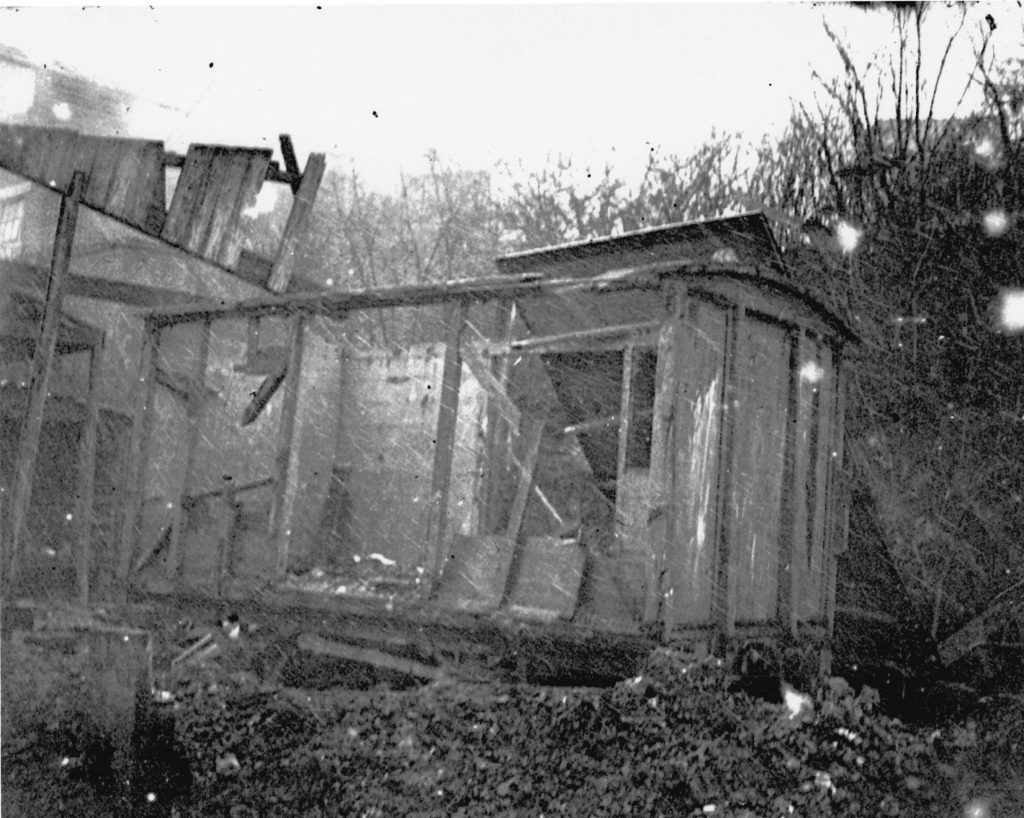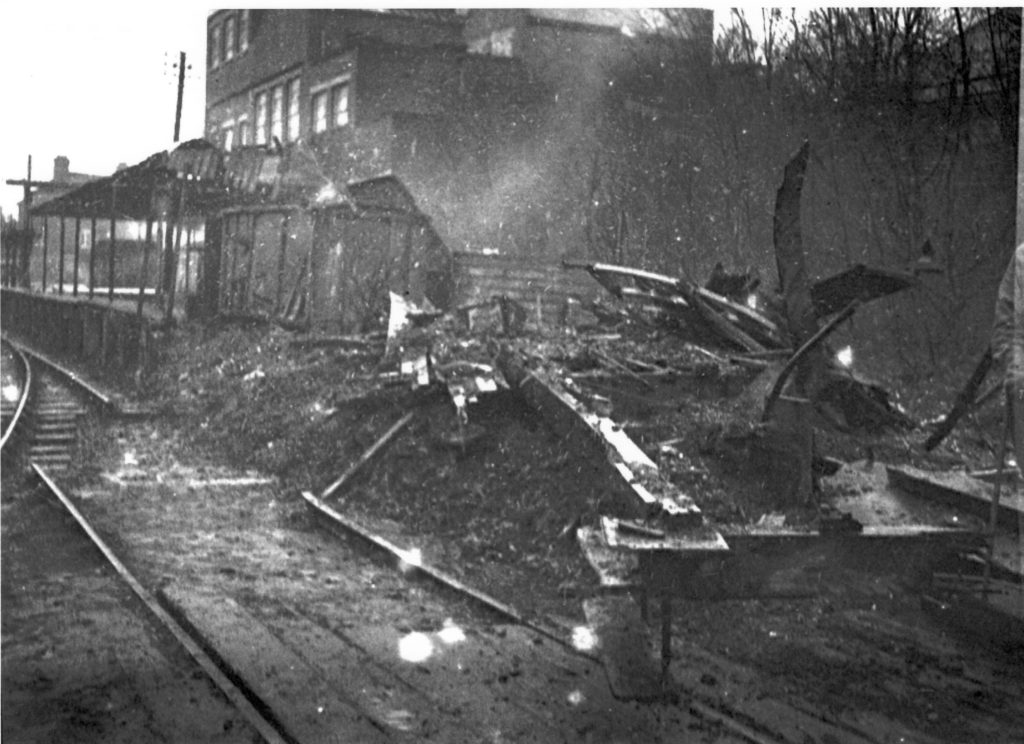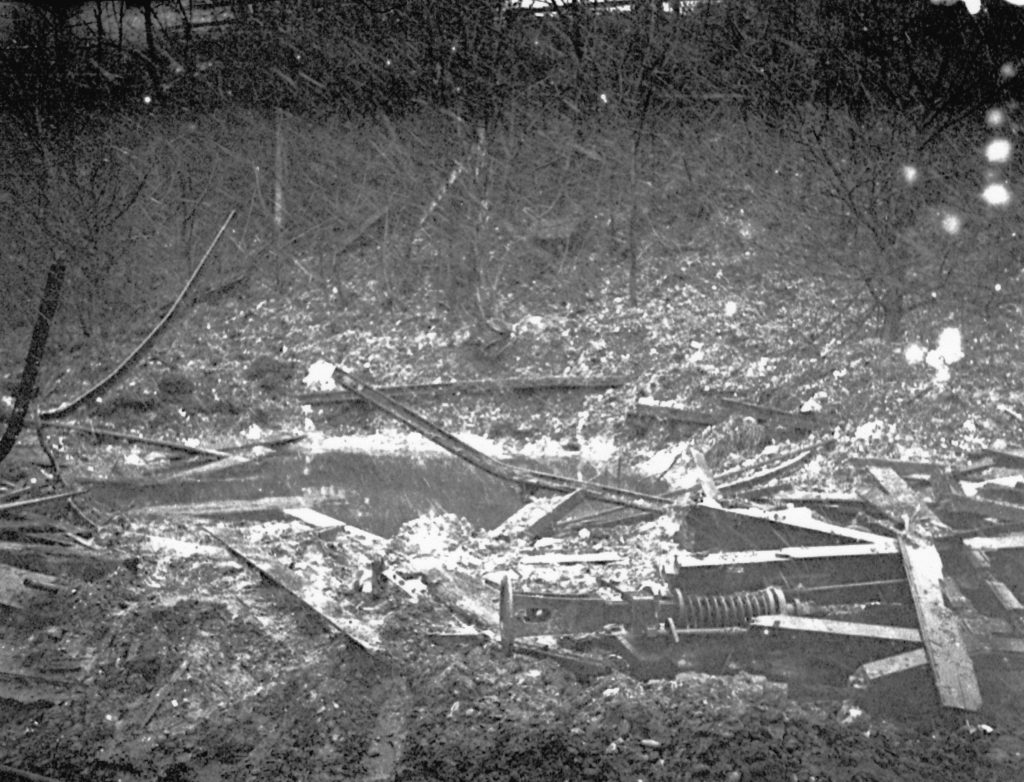Introduction
Halesworth Railway Station was bombed on 18 January 1941 resulting in three deaths, Walter Holland, the Station Master, Hannah his wife and their daily help, Joan Clarke. At least two-thirds of the building was demolished. Why the station was bombed is a matter of debate. Was the raid directed at the dairy, was it an attack on the sidings, was it in retaliation for machine-gun fire against the aircraft or was it by chance? The following is a collection of newpaper articles and personal reminiscences.
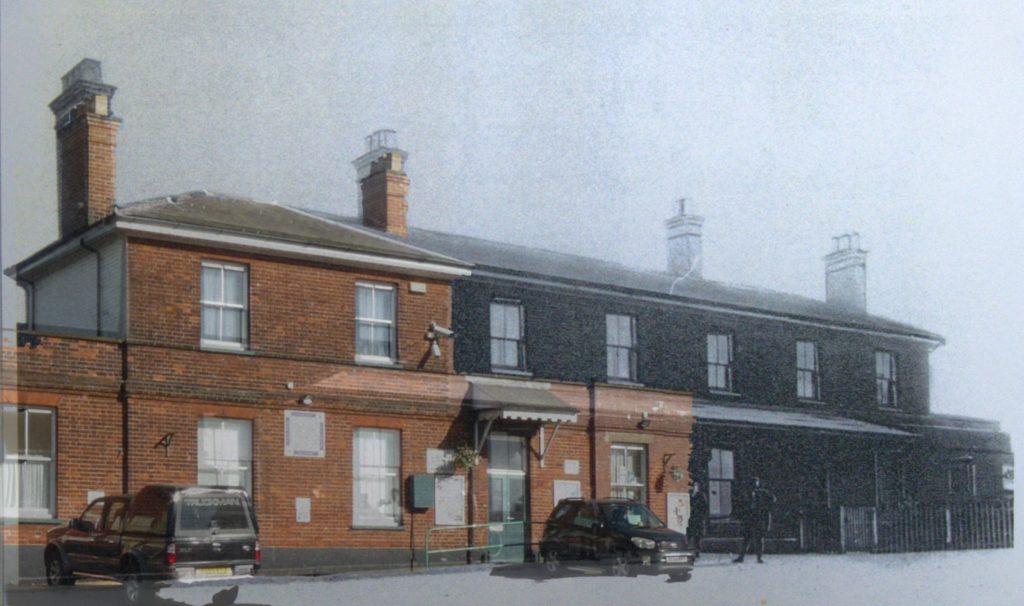
Three Killed in East Anglian Town, Raider “Hedgehops” Towards Coast (from a local newspaper)
Shortly after it had dropped high explosive bombs on an East Anglian town on Saturday afternoon a German plane was seen “hedgehopping” as it made its way towards the coast. It was apparently endeavouring to avoid anti-aircraft fire which was stated to be very lively. An assistant at a country motor garage said the machine only just missed the roof. He could see the occupants of the front part and the ice on the wings quite plainly.
Miriam Vickery, neé Holland’s, memories, recorded June 2009
“Joan Clarke came to work in the house for us in 1937. She proved to be a wonderful help and companion to my mother who was almost blind. Very quickly she became a dear friend and one of the family, often choosing to spend much of her free time with us. Joan was still with us in 1939 when we added two charming young evacuees to the Station House family.

Violet and Mary were little girls from London. They came from a large and very deprived family and knew nothing of country life and people. They entered a new world and were fascinated with the work and the friends they made at the station. They loved to watch the moving platform, or pat the horses when Mr Punchard came up to collect and deliver goods unloaded from the trains. Then they would spend time ‘helping’ us work in the Station House allotment on the other side of the railway line. We, and they, were sad when Violet and Mary were moved in late 1940 to an area of the Midlands. It was felt that they would be safer there …
On 18 January, 1941, my shift as a local telephone operator ended at 2:00pm. At 1:55pm we had heard an explosion and the telephone indicator board began to flash the telephone numbers which were out of use. I recognised the Station House number among them. However, I was completely unprepared for the scene of disaster and rubble which met me as I turned into Station Yard to go home for my dinner…”
Four days later Halesworth stood still. Silent crowds lined the streets as three Union Jack draped coffins were carried from the church to the cemetery on a railway lorry – the Station’s final tribute to three of its own. Station House Halesworth was never rebuilt.
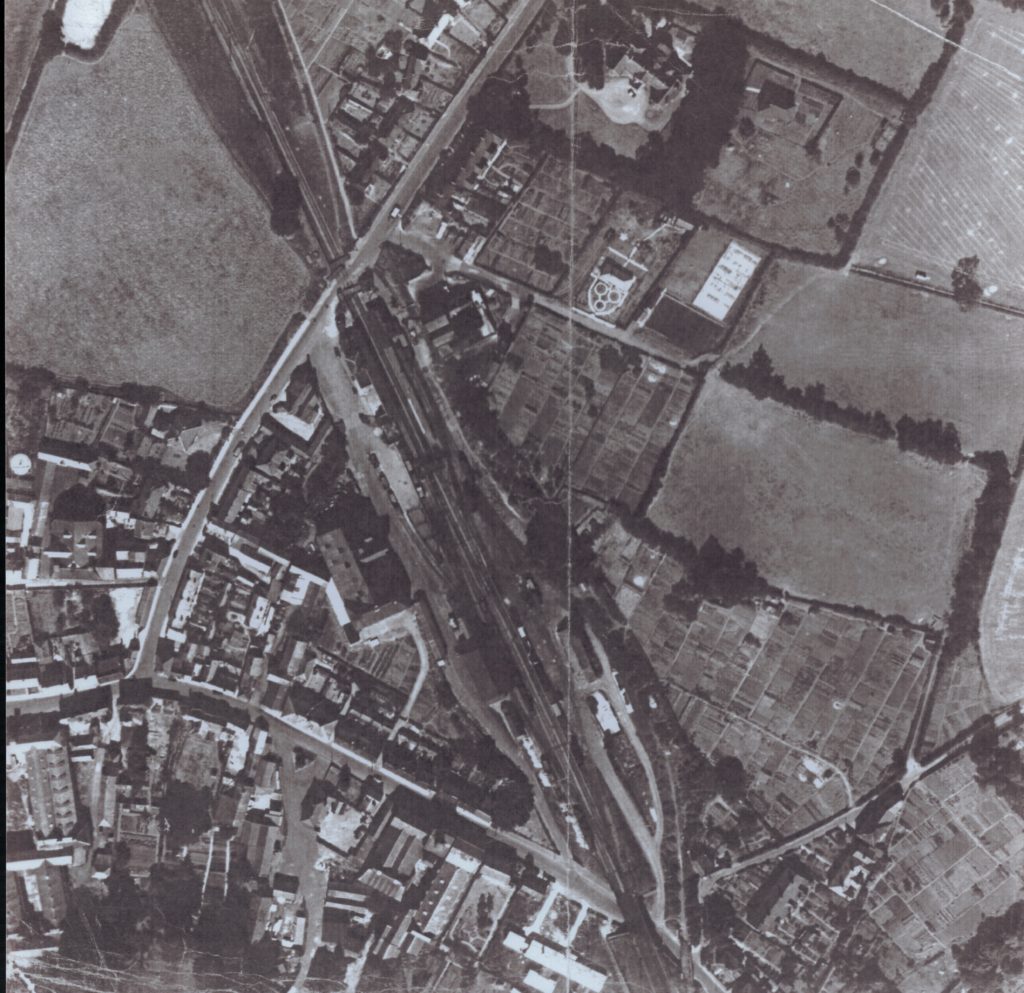
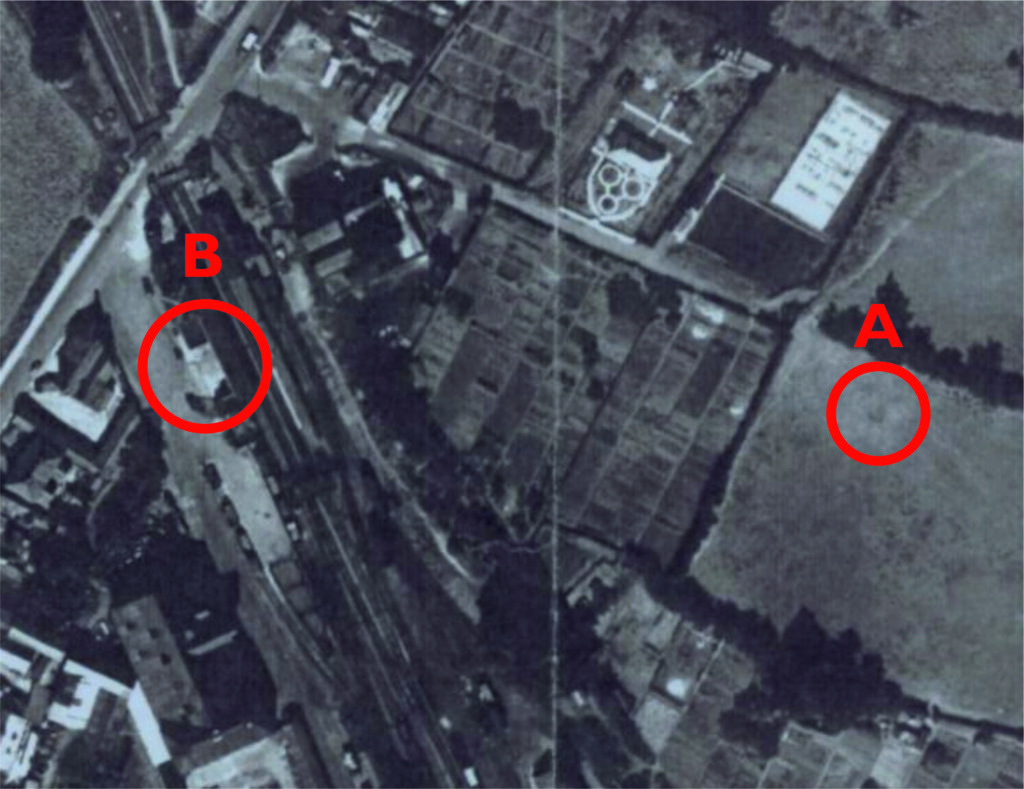
The aftermath
Four days later Halesworth stood still. Silent crowds lined the streets as three Union Jack draped coffins were carried from the church to the cemetery on a railway lorry – the Station’s final tribute to three of its own. Station House Halesworth was never rebuilt.
Very little could be salvaged from the Station House. Miriam and her brother Walter, who was by now on army service in Egypt, had lost everything. Miriam was given a home and loving care by Tom and Mabel Vickery in Holton Road, the parents of her fiancé Mervyn, whom she married in 1942. Walter married after the War and went on to become a Station Master. If Herbert and Hannah had lived long enough, they would have known six grandchildren.
Monty’s Memories (Gerard Montague was a reporter for the Halesworth Times)
Halesworth was accustomed to the dreaded wail of the Air Raid warning siren which was housed at the former police station in London Road. There had been countless incursions by Nazi bombers during daylight and heavy bombing on their way in or out to bomb our cities and towns at night. But it was not until 1941 that the stark reality of bombing was brought home to the town.
On Saturday January 18 1941 I and the late Ted Sutherland took up our four hour duty stint at one o’clock in the afternoon at the Royal Observer Corps Post which was based on a field off Holton Road. The farm was owned by the late Reggie Page.
The post comprised a sand-bagged compound with a galvanised roof. Our equipment consisted of a circular map of the district fitted on a tripod stand with a moveable pointer with which an aircraft could be sighted, followed and plotted across the specially marked plotting map. Our post also linked up other observation posts in our area.
One of the two men on duty plotted aircraft on the map, while the other had the mobile phone, which was directly connected to our centre headquarters at Norwich, which was directly connected to Fighter Command. We could also hear other posts in our area sending in their reports to the centre. When we took up duty on Saturday January 18, at one o’clock in the afternoon, I was on a spell with the telephone. It was snowing. I heard the Southwold post report an unidentified aircraft approaching the coast. In a short time the snow ceased and we heard an aircraft approaching. This was continually reported to the centre.
Through this now very thin snow we saw the aircraft flying at about one to two thousand feet. It was a Dornier bomber known to us as the ‘flying pencil’. By now the snow had stopped and the sun came through. We kept up a continuous report to the centre. The Dornier flew in and circled the town three times. It then began what was to be a bomb run. I saw it line up our post and then came a stick of bombs. There was a direct hit on the Station Master’s House which was part of the Railway Station, which killed him, his wife and a young girl who worked for them.
The raider came straight for our post, possibly having spotted the searchlight which was in the same field as our post. We had to take cover in our shelter as the Dornier opened up with his machine gun. We could hear the bullets around us. We came out as he passed overhead and banked back towards the sea. We did hear that an army machine gun post at Henham opened up and hit the Dornier before it reached the coast and was seen to be in trouble with smoke coming from the aircraft as it flew over the sea. But this was never confirmed.
That night Lord Haw-Haw broadcasted from Germany that a successful raid had been made on marshalling yards at Halesworth. Except for the debris, the rail line was not touched.
From a letter from George Ellis 12th January 2000
On that day Saturday 18 January 1941 I saw this aircraft and heard anti-aircraft fire. I looked out of the back window and saw the aircraft was a Dornier 17. It was just releasing eight H.E.’s (high explosive bombs) from its bomb bay and they looked like string of sausages coming out. I came outside our house 23a Station Road, where we then lived, and realised where the bombs had landed. I went up to the railway and saw the devastation the bombs had made.
Three people were killed, namely Mr & Mrs Holland, the Station Master and his wife and their maid Joan Clarke, who was only 19 years old, plus four injured. The Dornier opened up with its guns, spraying the streets and gas works etc. I’m not sure if it was brought down in due course, but some people thought so. I happened to witness this and can verify what I saw, many houses had damaged slates etc. … I was about 19 at the time and had recently been to Norwich and passed my medical.
COMMEMORATION OF CIVILIAN WAR DEAD, 1939-1945
CLARKE, Joan Elizabeth, age 19; B.R.C.S. Daughter of Gladys Ellen Clarke,
of 12 The Avenue. 18 January 1941 at Station House.
HOLLAND, Hannah, age 59; of Station House. Wife of Herbert William Holland.
18 January 1941 at Station House.
HOLLAND, Herbert William, age 55; of Station House. Husband of Hannah Holland. 18 January 1941 at Station House.
End Note
The Museum would like to add to our records of the station bombing. We will be greatful if you can add to our records. It would be great if there are photographs of the station building after the bombing.

